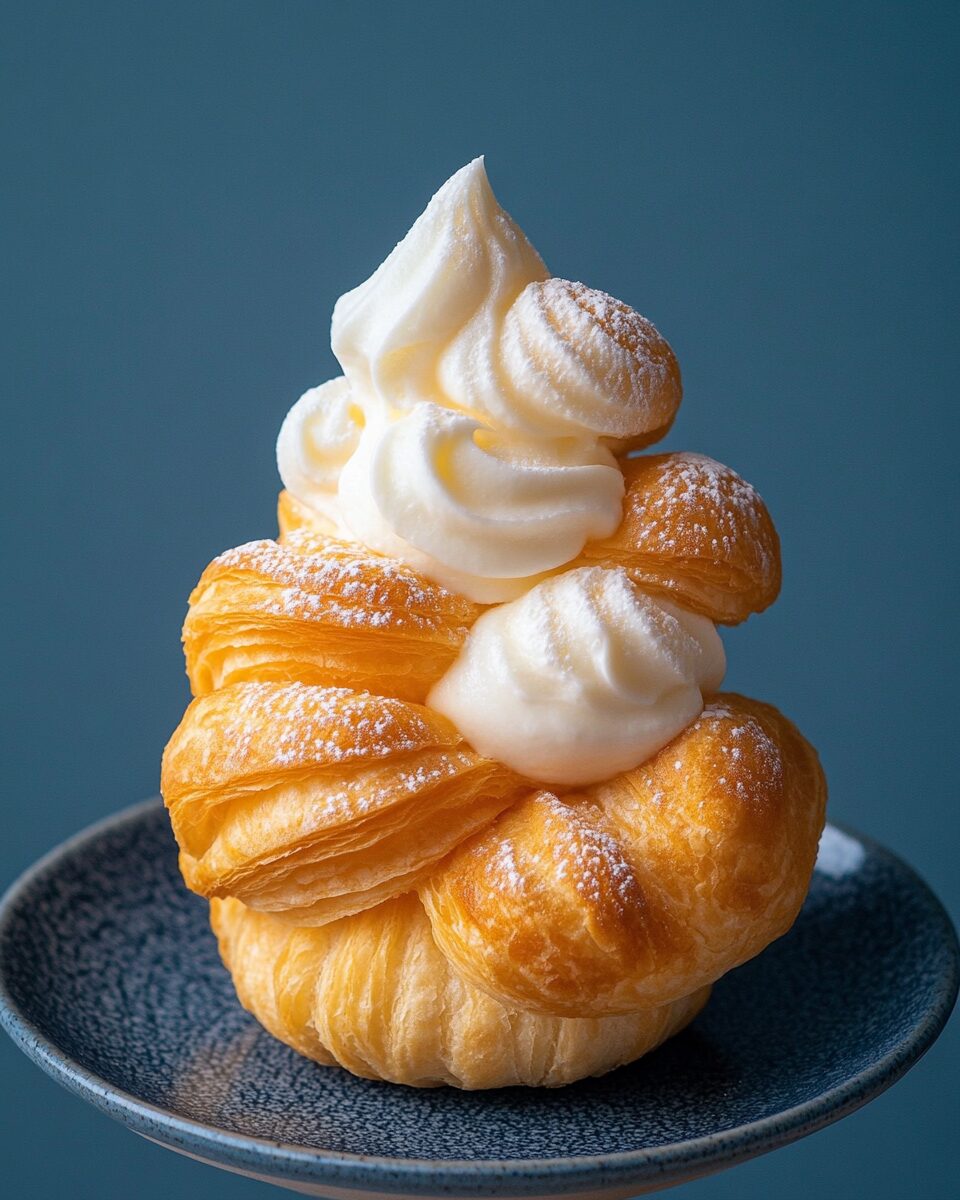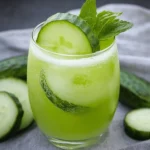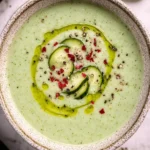Japanese Cheese Tarts, also known as Hokkaido cheese tarts, are delightful pastries featuring a buttery, flaky crust filled with a rich and creamy cheese filling.
FULL RECIPE:
Ingredients
- For the Tart Shells:
- 1 1/2 cups (195g) all-purpose flour
- 8 1/2 tablespoons (120g) unsalted butter, chilled and cubed
- 1/2 cup (60g) powdered sugar
- 1 large egg yolk
2. For the Cheese Filling:
- 1 cup (225g) cream cheese, softened
- 1/2 cup (60g) powdered sugar
- 2/3 cup (160ml) heavy whipping cream
- 1 teaspoon cornstarch
3. For the Egg Wash:
- 1 egg yolk
- 1/2 tablespoon milk or water
Directions
- Prepare the Tart Shells: In a mixing bowl, combine all-purpose flour and powdered sugar. Add chilled butter cubes and mix until the mixture resembles coarse crumbs. Add the egg yolk and continue mixing until the dough comes together. If necessary, knead gently to form a smooth dough. Divide the dough into portions and press each into a 2.6-inch mini tart mold, ensuring an even thickness. Trim any excess dough from the edges. Preheat the oven to 410°F (210°C). Bake the tart shells for 15 minutes or until golden brown. Remove from the oven and let them cool before removing from the molds.
- Prepare the Cheese Filling: In a bowl, mix softened cream cheese and powdered sugar until smooth. Gradually add heavy whipping cream in three portions, mixing well after each addition to ensure a smooth consistency. Sift in the cornstarch and mix thoroughly.
- Assemble the Tarts: Transfer the cheese filling into a piping bag. Pipe the filling into the cooled tart shells, slightly overfilling to create a dome effect. Place the filled tarts in the freezer for about 4 hours or until the filling is firm.
- Bake the Tarts: Preheat the oven to 410°F (210°C). In a small bowl, prepare the egg wash by mixing the egg yolk with milk or water. Remove the tarts from the freezer and brush the tops with the egg wash. Bake for 15 minutes or until the tops are golden brown. Allow the tarts to cool slightly before serving.
Nutrition Facts
- Calories: 230 kcal
- Total Fat: 18g
- Saturated Fat: 10g
- Trans Fat: 0g
- Cholesterol: 90mg
- Sodium: 90mg
- Total Carbohydrates: 20g
- Dietary Fiber: 1g
- Sugars: 10g
- Protein: 5g
The Origins of Japanese Cheese Tarts
The concept of cheese tarts has been around for centuries, but the Japanese variation has a distinct identity. Hokkaido, the birthplace of these tarts, is home to some of Japan’s finest dairy farms. The region is known for producing premium milk, butter, and cheese, which contribute to the superior taste and texture of Hokkaido cheese tarts. The trend began when local bakeries in Japan started experimenting with cheese-based desserts, eventually leading to the creation of these creamy tarts. The popularity of Japanese Cheese Tarts skyrocketed when Bake Cheese Tart, a well-known Japanese bakery, introduced them to the mainstream market. Their version of the tart became an instant hit, leading to long queues outside their stores. As demand grew, other bakeries and dessert shops followed suit, each adding their own unique touch to the classic recipe. Today, Japanese Cheese Tarts can be found in numerous countries, from Japan and Singapore to Australia and the United States.
What Makes Japanese Cheese Tarts Unique?
One of the key elements that set Japanese Cheese Tarts apart from other cheese-based desserts is their signature crust. Unlike traditional pie crusts or graham cracker bases used in Western-style cheesecakes, the crust of a Japanese Cheese Tart is made from a delicate shortcrust pastry. This gives it a light, crumbly texture that perfectly complements the creamy filling. Another defining feature is the filling itself. Japanese Cheese Tarts use a combination of different cheeses, typically including cream cheese, mascarpone, and parmesan. The mixture creates a complex flavor profile that is both sweet and slightly tangy. Additionally, the use of cornstarch and heavy cream gives the filling a luscious, custard-like consistency. Japanese Cheese Tarts are also known for their aesthetic appeal. The slightly domed top, golden brown from a light egg wash, makes them visually enticing. Their individual serving size makes them perfect for snacking, gifting, or serving at gatherings.
Serving and Enjoying Japanese Cheese Tarts
One of the most intriguing aspects of Japanese Cheese Tarts is their versatility in terms of serving temperature. Depending on your preference, you can enjoy them in different ways:
- Warm and Gooey: Straight from the oven, the filling remains molten and slightly runny, offering a delightful contrast to the crisp tart shell. This is the most indulgent way to enjoy them, as the flavors are at their peak, and the texture is incredibly smooth.
- Chilled and Firm: When refrigerated for a few hours, the cheese filling becomes firmer, resembling the consistency of a classic cheesecake. This method allows the flavors to deepen and become more pronounced.
- Frozen and Creamy: If you freeze the tarts, they take on an ice cream-like consistency. This is a great way to enjoy them during hot weather, offering a refreshing twist on the classic dessert.
Why Japanese Cheese Tarts Are So Popular
Japanese Cheese Tarts have gained worldwide recognition for several reasons. First, they strike the perfect balance between sweetness and cheesiness, making them appealing to both sweet-toothed individuals and those who prefer mildly sweet desserts. The use of high-quality dairy ingredients, particularly Hokkaido milk and cheese, further enhances their flavor. Another reason for their popularity is their convenience. These tarts are small, easy to carry, and can be enjoyed as an on-the-go snack. Unlike traditional cheesecakes that require slicing and plating, Japanese Cheese Tarts are ready to eat right out of the mold. Their aesthetic appeal also plays a role in their success. With their golden-brown tops and perfectly shaped crusts, they are highly Instagrammable, making them a favorite among social media users and food bloggers. The rise of Japanese and Asian-inspired desserts in Western markets has also contributed to their increasing global demand.
Tips for Perfecting Japanese Cheese Tarts at Home
While Japanese Cheese Tarts are available in many bakeries, making them at home allows for customization and ensures you use the best ingredients. To achieve bakery-quality results, consider the following tips:
Advertisement
- Use High-Quality Dairy Products: The quality of the cheese and cream you use will directly impact the flavor and texture of your tarts. Opt for premium brands, and if possible, use dairy products from Hokkaido.
- Chill the Dough Before Baking: Chilling the tart dough before rolling and baking helps prevent shrinkage and ensures a crisp, buttery crust.
- Blend the Cheese Filling Smoothly: To achieve a silky consistency, make sure all the ingredients in the cheese filling are well blended. Straining the mixture before piping it into the tart shells can help eliminate any lumps.
- Don’t Overbake: The key to achieving a gooey center is to bake the tarts just until the tops are golden. Overbaking can cause the filling to become too firm.
- Experiment with Flavors: While the classic version is made with a combination of cream cheese and mascarpone, you can experiment with flavors by adding matcha, chocolate, or even fruit purees.
Conclusion
Japanese Cheese Tarts are a testament to Japan’s ability to refine and perfect desserts with precision and attention to detail. Their combination of crisp pastry, rich cheese filling, and unique serving versatility make them one of the most beloved treats in the world. While they are readily available in specialty bakeries, making them at home allows for a more personalized experience and the opportunity to enjoy them fresh from the oven.






